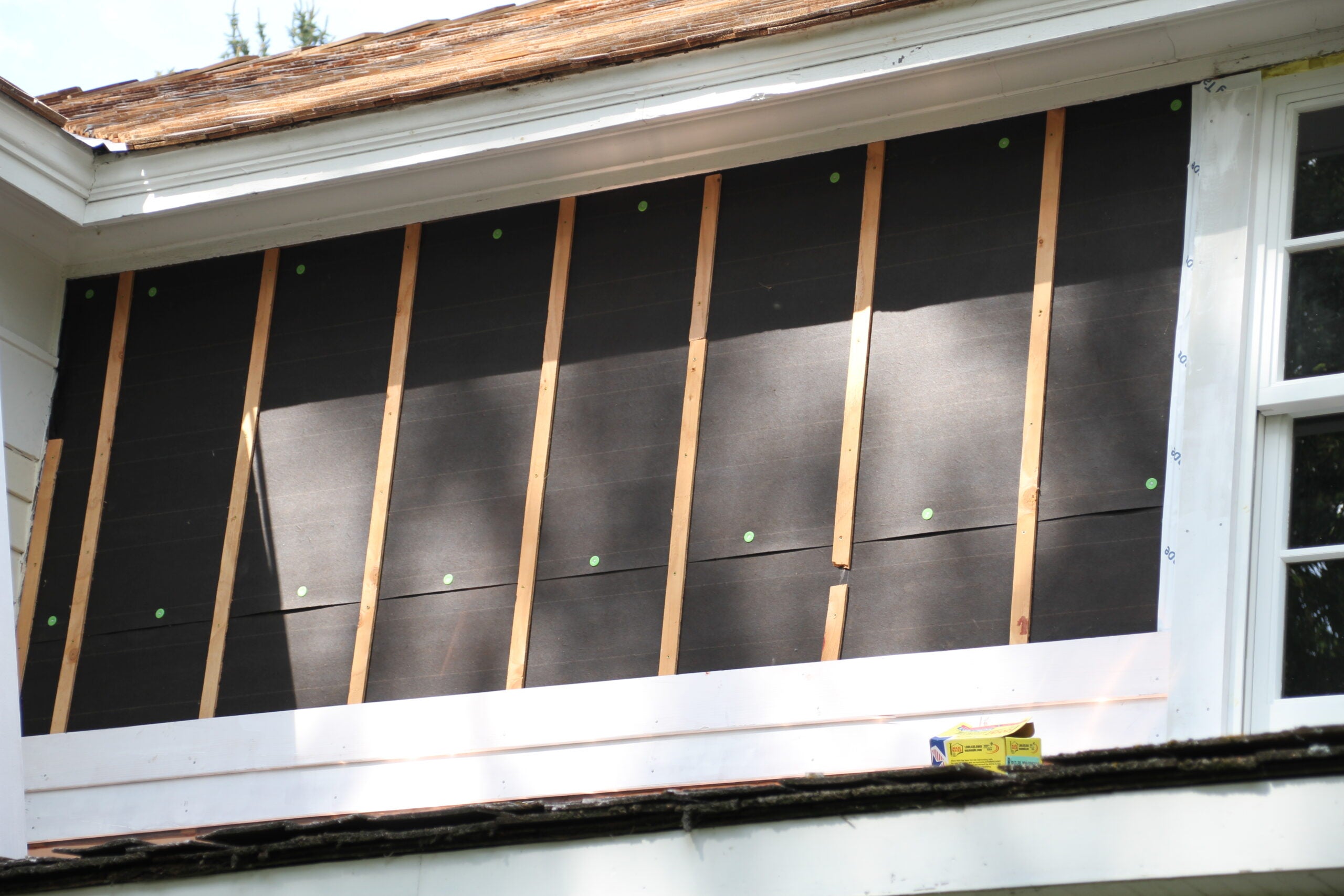Samuel and Nancy Green settled in Fitchburg around 1850 and began building their Gabled Ell farmhouse. Over the years, the house saw additions and new owners, but part of the original home withstood the test of time: the board-style siding.
This fall, John Freiburger, a Wisconsin registered home inspector, is re-siding the Samuel and Nancy Green House where he lives. Over time, the siding became too worn to paint.
So, it’s time to get to work. Freiburger’s adding modern bevel siding, primed on all sides. He’s layering tar paper over Tyvek and installed ⅜-inch plywood strips. This approach will allow the expensive wood siding to dry, Freiburger said, and prevent warping.
Stay informed on the latest news
Sign up for WPR’s email newsletter.
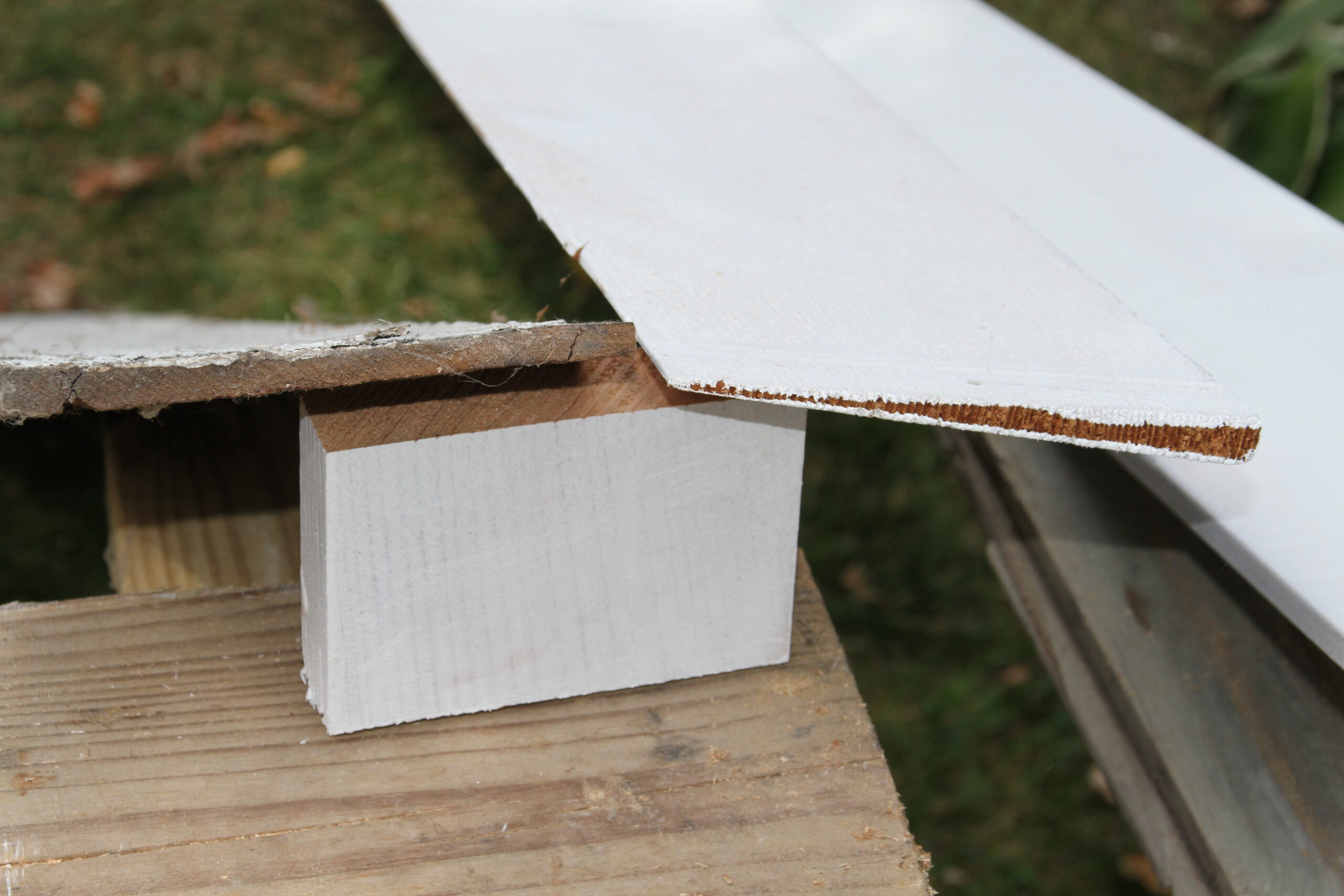
The siding project is a reminder of the complexity of our homes’ exteriors, and the importance of getting new insulation and siding installed correctly.
You need to be an informed customer, Freiburger told WPR’s “The Larry Meiller Show.” You should print two copies of the installation instructions: give one to your contractor and keep the other for yourself. And read it, he added.
“There’s a lot of issues out there right now in home improvements with some of these heavily advertising firms who are not doing the sort of job that they should for the consumer,” Freiburger said. “So, the consumer has to be really careful.”
During his visit with Larry, Freiburger reviewed the pros and cons of a handful of siding materials.
“There’s a whole lot of things we need to think about: What looks good, what is affordable, what is safe and maintainable,” Freiburger said.
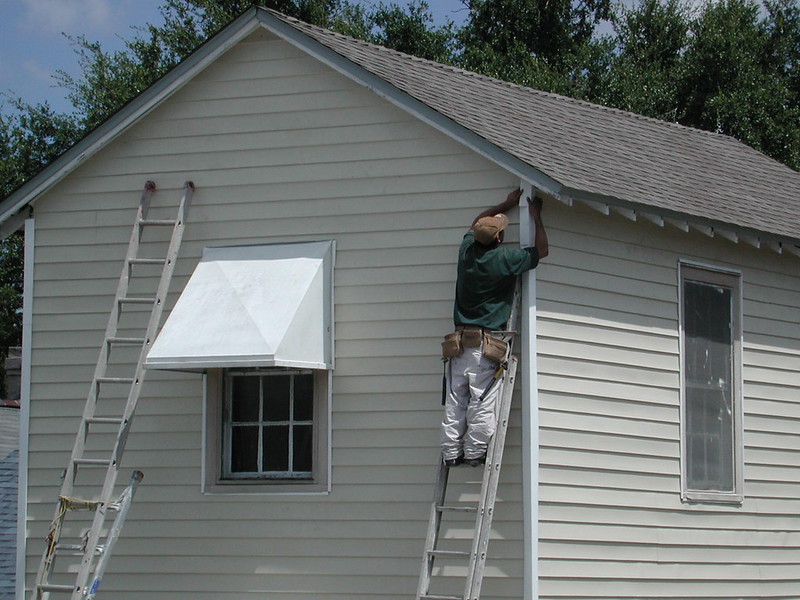
Vinyl
Vinyl siding is great if you’re looking for a low-maintenance option, Freiburger said. It also comes at a range of costs.
“There’s everything from junk vinyl siding to ultra premium, and there’s a huge difference between them,” Freiburger said.
If you want to wash your vinyl, make sure there’s a weather resistant barrier like Tyvek underneath. Vinyl siding by itself isn’t waterproof.
Vinyl is flammable, so Freiburger cautions against it if you live in a neighborhood where homes are very close together.
“I have seen house fires where there’s a fire in the garage and it didn’t get into the house because of the firewall,” Freiburger said. “But it spread to the siding and burned the entire exterior of the house.”
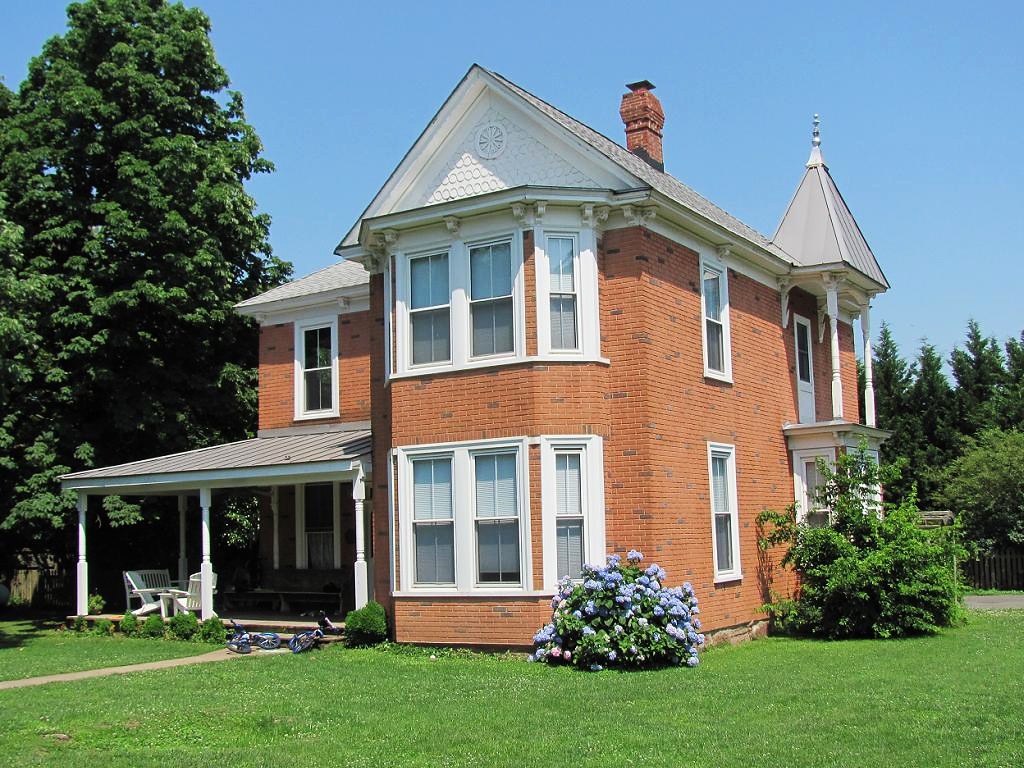
Brick veneer
Brick veneer — if done correctly — is a beautiful, long-lasting system, Freiburger said. Unfortunately, that’s rarely the case.
Contractors create brick veneer by layering mesh and a scratch coat of mortar. They then glue down bricks and add mortar to create the desired look.
The problem occurs when the metal backing starts to rust after extended exposure to water, Freiburger said. Bricks aren’t able to shield the metal from rain, and they will start breaking apart due to rust jacking.
If you’re interested in brick veneer, Freiburger suggests checking out the Masonry Veneer Manufacturers Association, part of the National Concrete Masonry Association.
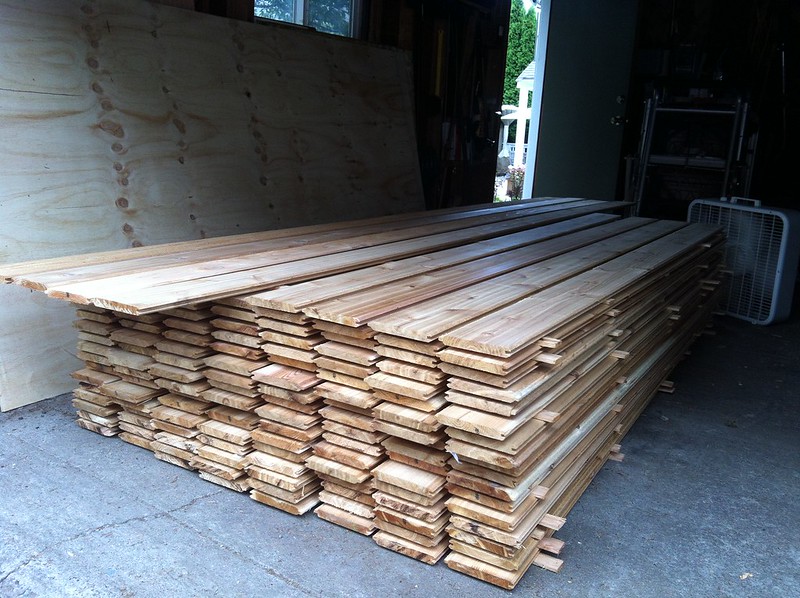
Cedar
As far as wood siding choices go, cedar is on the expensive end. But if properly pre-finished, flashed and maintained, cedar can outlast other options like pine.
Visit the Cedar Shake and Shingle Bureau and download the exterior and interior wall manual, Freiburger said. That’ll tell you everything you need to know about grades, cuts, shapes and more.
Freiburger said to be careful when pressure washing cedar siding. Unsealed siding can trap water behind it, and that leads to warping. Instead, you can use a wire brush and sweep to prep the siding for a new coat of stain.
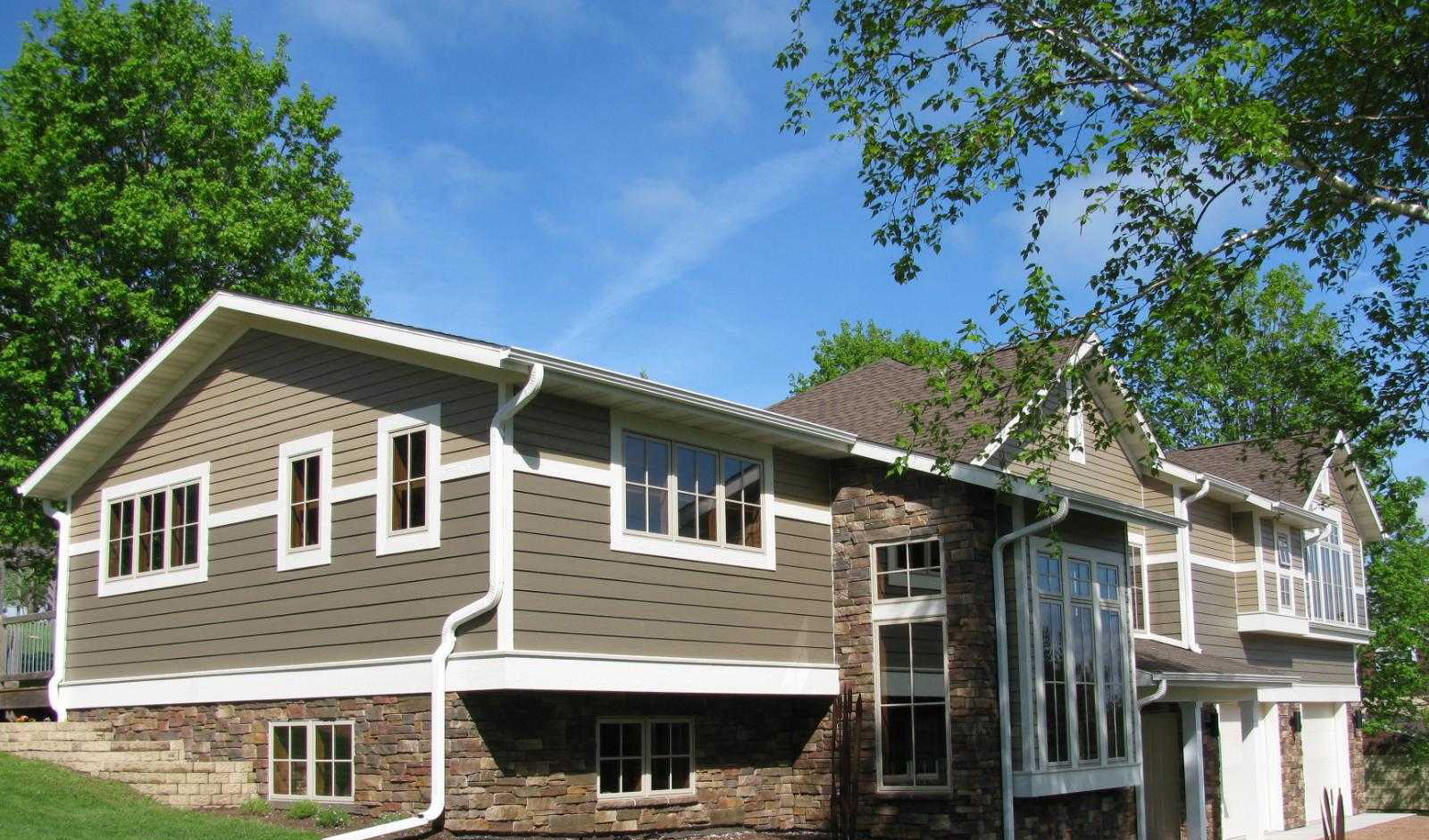
Fiber cement
Fiber cement siding is fire resistant and extremely stable, Freiburger said. It doesn’t expand or contract like vinyl siding might, unless you paint it a dark color.
Freiburger recommends going through the James Hardie company. Their fiber cement siding is called “Hardie Plank Lap Siding.”
“You need to download the Hardie plank lap siding installation information,” Freiburger said, “because most of the time when I see it, it’s put on wrong.”
For example, Hardie siding needs one inch of space from a gutter. That’s different from other siding materials, like vinyl. Each type of siding has specific installation requirements, Freiburger said, and it’s imperative to know the correct technique if you want longevity.
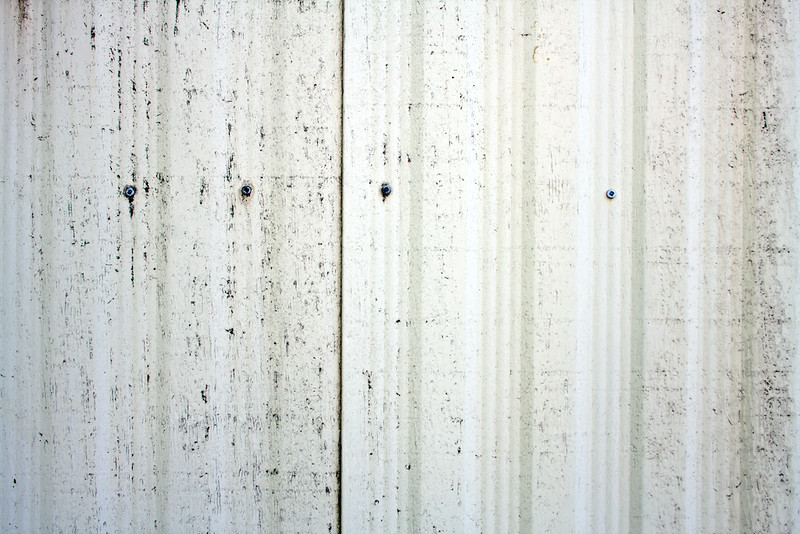
Aluminum
Aluminum siding comes in many different grades and thicknesses.
“Some of the thin stuff gets pretty banged up over the years, and sometimes that becomes a little bit of an eyesore,” Freiburger said, “but the better grades of aluminum will literally last for an unforeseeable length of time.”
And, Freiburger added, you can cover aluminum siding with the appropriate kind of paint.
